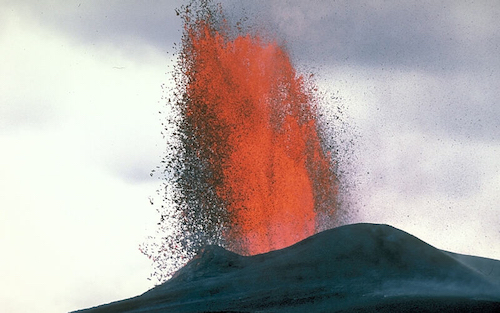Carbon Dioxide in the Air - Volcanoes give off less CO2 than human activities.
Many people think volcanoes produce more carbon dioxide than humans.
In fact, volcanoes produce far less carbon dioxide than humans.

Geologists have checked this problem very carefully.
This chart compares the average yearly production of carbon dioxide by human activities and volcanoes......
In fact, volcanoes produce far less carbon dioxide than humans.

Geologists have checked this problem very carefully.
This chart compares the average yearly production of carbon dioxide by human activities and volcanoes......

Very large volcanic eruptions do affect global temperatures for a year or two.

The second-largest volcanic eruption of the 20th century occurred at Mount Pinatubo in the Philippines on June 15, 1991.
The volcano exploded in a cataclysmic eruption that ejected more than 5 cubic kilometres of material.
The ash cloud from this eruption rose 35 kilometres into the air.
Nearly 20 million tons of sulphur dioxide were injected into the stratosphere in Pinatubo's 1991 eruptions.
Dispersal of this gas cloud around the world caused global temperatures to drop temporarily (1991 through 1993) by about 0.5°C.
In 1815, Mount Tambora, an enormous volcano on a remote island in the Indian Ocean, erupted and threw enormous amounts of volcanic ash into the upper atmosphere.
The weather in 1816 was unprecedented.
Spring arrived, but then everything seemed to turn backward, as cold temperatures returned.
1816 became known as "The year without a summer".
The lack of sunlight became so severe that farmers lost their crops.
Food shortages were reported in Ireland, France, England, and the United States.
Food shortages were reported in Ireland, France, England, and the United States.

It was over 100 years before anyone understood the reason for this weather disaster.
New research shows that volcanic events over the last 2,500 years can be linked to short periods of global cooling.